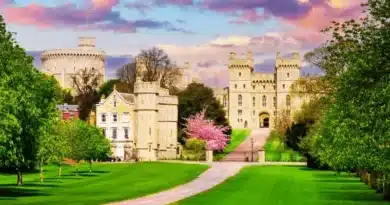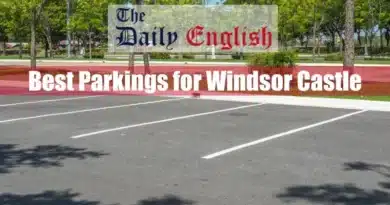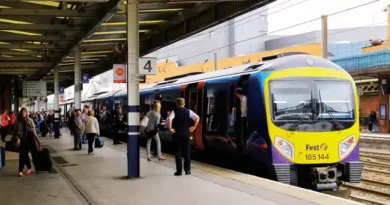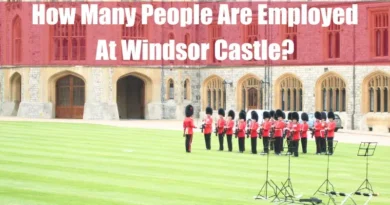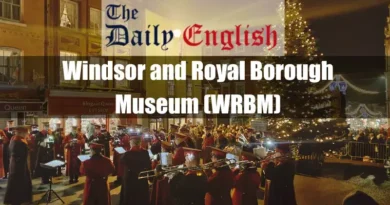Get to Windsor Castle From Milton Keynes
Key Points
- Windsor Castle is approximately 58.2 miles (93.7 km) from Milton Keynes via the M1 and M25, 52.8 miles (85.0 km) via the A355, and 58.3 miles (93.8 km) via the A413.
- The fastest driving route is via the M1 and M25, covering about 58 miles in roughly 1 hour and 40 minutes, offering efficient motorway travel with good signage—ideal for those prioritising speed and directness.
- Alternatively, a more scenic drive via the A355 or A413 takes slightly longer (around 1 hour and 46–47 minutes) but offers a blend of countryside and town driving with less time on major motorways.
- By train, the journey takes approximately 1 hour and 44 minutes to 2 hours and 5 minutes, involving a direct service to London Euston, a tube or Elizabeth line transfer, then a short train from Slough to Windsor & Eton Central, followed by a brief walk to the Castle; this is convenient and reliable, especially during peak road traffic.
- For cycling enthusiasts, National Cycle Route 6 offers a scenic ride of about 54.7 miles in just under five hours, passing landmarks like Bletchley Park and the Grand Union Canal, while longer alternatives explore St Albans and Windsor Great Park.
- Overall, the best route depends on your priorities: by car via M1/M25 is quickest by road, the train offers a stress-free option avoiding traffic, and cycling promises a rewarding adventure through picturesque landscapes.
Routes Comparison Table
🚗 By Car
| Route | Approx. Distance | Est. Time | Type of Roads | Considerations |
|---|---|---|---|---|
| Via M1 and M25 | 58.2 miles | ~1 hr 40 mins | Motorway-heavy (M1, M25, M4) | Fastest under ideal conditions; efficient for direct travel, but prone to congestion on M1 and M25. Less scenic. |
| Via A355 | 52.8 miles | ~1 hr 46 mins | Mix of A-roads and town roads | More scenic with rural and suburban driving. Avoids long motorway stretches, but can be slower through towns and villages. |
| Via A413 | 58.3 miles | ~1 hr 47 mins | A-roads, brief motorway use | Offers balance between scenery and speed. Passes through charming Buckinghamshire towns but has more roundabouts and local traffic. |
🚆 By Train
| Route Variation | Est. Duration | Initial Train | London Transfer | Westbound Train | Final Leg | Considerations |
|---|---|---|---|---|---|---|
| Fastest | ~1 hr 44 mins | Avanti to Euston (~32 mins) | Walk/Tube to Paddington | GWR to Slough (~16 mins) | Train to Windsor (~6 mins) + walk | Fastest overall. Involves walking or short Tube ride between stations in London. Well-connected but requires navigation in central London. |
| Standard | ~1 hr 46–48 mins | Avanti or West Midlands (~32–41 mins) | Tube to Tottenham Court Rd | Elizabeth Line to Slough (~34 mins) | Train to Windsor (~6 mins) + walk | Reliable option. More station transfers but straightforward with consistent services. May have short waiting times. |
| Bus variation | ~1 hr 54–2 hr 5 mins | Train to Euston | Underground + Elizabeth Line | Train to Slough | Bus to Windsor (~20 mins) + walk | Good if train connections to Windsor are infrequent. Slightly longer and less seamless due to bus connection at the end. |
🚲 By Cycle
| Route | Distance | Est. Time | Elevation Gain/Loss | Terrain | Considerations |
|---|---|---|---|---|---|
| Via National Route 6 | 54.7 miles | ~4 hr 42 mins | ↑ 722 ft / ↓ 965 ft | Towpaths, country roads | Moderate route with good balance of nature and heritage (e.g. Grand Union Canal). Gentle climbs, mostly quiet paths. Suitable for confident cyclists. |
| Via Routes 6 & 61 | 65.9 miles | ~5 hr 46 mins | ↑ 1,847 ft / ↓ 2,087 ft | Rural, urban, scenic | Longest and most scenic option. Passes through historic towns like St Albans. Demanding ride with significant elevation changes. Best for experienced cyclists. |
| Route 6 + Broad Lane + 61 | 51.3 miles | ~4 hr 31 mins | ↑ 1,079 ft / ↓ 1,319 ft | Mixed (lanes, forest) | Shortest cycling route. Offers varied scenery including Windsor Great Park. Includes hilly segments and mixed surfaces. Best with a hybrid or touring bike. |
Getting to Windsor Castle From Milton Keynes By Car
Route 1: Via M1 and M25
One of the fastest and most direct routes from Milton Keynes to Windsor Castle is via the M1 and M25, covering approximately 58.2 miles and taking around 1 hour and 40 minutes under ideal driving conditions. While this is generally the quickest option, it is worth noting that usual traffic conditions may affect travel time. Below is a detailed step-by-step breakdown of this journey.
1. Departure from Milton Keynes: Getting onto the M1 via A509
- Begin your journey in Milton Keynes, heading northwest on Saxon Gate towards Midsummer Boulevard (0.3 miles).
- Take the 3rd exit onto H5/Portway/A509 at the North Saxon Roundabout.
- Continue on H5/Portway/A509, proceeding through several roundabouts:
- At the first roundabout, take the 2nd exit (0.3 miles).
- Continue straight at the next two roundabouts, each time taking the 2nd exit (0.3 miles each).
- At North Overgate Roundabout, take the 2nd exit (0.5 miles).
- Proceed through two more roundabouts, each with the 2nd exit, covering 0.7 miles and 0.4 miles, respectively.
- Take the 1st exit onto the A509 (0.3 miles) at Northfield Roundabout.
- At the Broughton Interchange, take the 3rd exit to merge onto the M1 ramp, signposted London/Luton (0.3 miles).
- Use the right lane to merge onto the M1 motorway.
2. Motorway Segment: M1 to M25 to M4
- Continue on the M1 for approximately 28.8 miles.
- At junction 6A, use the 3rd lane from the left to take the exit for M25 towards M40/M4/Heathrow Airport (0.8 miles).
- Use the right lane to merge onto the M25, following it for 18.8 miles.
- At junction 15, use the left 2 lanes to merge onto the M4, signposted Slough (2.2 miles).
- Take the A4 exit towards Colnbrook/B470/Datchet/Langley (0.3 miles).
3. Final Leg: A4 to Windsor Castle via B470
- At Langley Roundabout, take the 2nd exit onto Major’s Farm Road/B470 (1.7 miles).
- Proceed to the next roundabout and take the 2nd exit onto London Road/B376/B470 (210 feet).
- At the following roundabout, take the 1st exit onto High Street/B470 (0.2 miles).
- Turn right onto Windsor Road/B470, continuing for 1.4 miles.
- Then turn left onto Thames Street/B3022 – please note that parts of this road may be closed at specific times or on certain days.
- Finally, turn left onto Castle Hill (266 feet), and you will arrive at Windsor Castle.
This route offers a balance of directness and motorway efficiency, making it a solid choice for most travellers starting from Milton Keynes. Always check real-time traffic conditions and local road closures before departure for the most seamless experience.
Route 2: Via A355

For drivers seeking an alternative to the motorway-heavy M1/M25 route, travelling via the A355 presents a more scenic option. Although slightly longer in time, at approximately 1 hour and 46 minutes under ideal conditions, this route covers 52.8 miles and takes you through a mix of countryside roads and town centres. Below is a comprehensive, step-by-step breakdown of this journey.
1. Starting in Milton Keynes: Join A5 and A4146
- Begin by heading northwest on Saxon Gate towards Midsummer Boulevard (0.3 miles).
- Take the 1st exit onto H5/Portway/A509 at North Saxon Roundabout.
- Proceed through a series of roundabouts along Portway/A509:
- Take the 2nd exit at the next roundabout (0.3 miles).
- Continue through North Grafton Roundabout, taking the 2nd exit again (0.3 miles).
- Take the 1st exit onto the A5 ramp at Portway Roundabout, signposted London/Dunstable (0.2 miles).
- Merge onto the A5 and continue for 4.9 miles.
- At Kelly’s Kitchen Roundabout, take the 3rd exit onto A4146. Continue as follows:
- At the next roundabout, take the 2nd exit (0.8 miles).
- Take the 2nd exit onto Stoke Road/A4146 (0.7 miles) at the following roundabout.
- At the next roundabout, take the 1st exit onto A4146 (3.0 miles).
- Proceed through two more roundabouts, each time taking the 2nd exit to stay on A4146, covering 0.5 miles and then 1.7 miles.
- At Wing Hill Roundabout, take the 2nd exit (0.8 miles).
2. Onto B488 and B4009 Towards London Road/A413
- At Grove Lock Roundabout, take the 3rd exit onto B488 (5.4 miles).
- Turn left onto Church Road/B488 and continue along B488 for another 1.6 miles.
- Take the 2nd exit onto Upper Icknield Way/B488 (2.9 miles) at the roundabout.
- Next, at the roundabout, take the 3rd exit onto B4009 (443 feet), then immediately:
- Take the 1st exit at the next roundabout onto Tring Hill/B4009 (0.5 miles).
- Turn left onto Upper Icknield Way/B4009 (3.0 miles).
- Take the 1st exit onto High Street (0.2 miles) at the roundabout.
- Continue through the next roundabout, taking the 1st exit onto South Street (0.3 miles).
- Follow the road as it becomes London Road (0.3 miles).
3. Join A413 to Reach Beaconsfield
- At the next roundabout, take the 1st exit onto London Road/A413 (8.7 miles).
- Make a slight left toward A413, then merge onto it (0.4 miles).
- At Gore Hill Roundabout, take the 3rd exit onto Gore Hill/A355 and continue as follows:
- Follow the A355 for 3.9 miles.
- Take the 3rd exit onto Amersham Road (0.4 miles) at the next roundabout.
- Continue onto Park Lane (0.2 miles).
- Take the 2nd exit onto London Road/A40 (0.3 miles) at London End Roundabout.
- At the following roundabout, take the 3rd exit onto A355 (0.6 miles).
4. Final Stretch to Windsor Castle via A355 and A332
- Take the 2nd exit at Beaconsfield Interchange to stay on A355 (4.2 miles).
- Continue straight at the next two roundabouts, taking the 2nd exit (167 feet and then 0.5 miles).
- Proceed on Farnham Road/A355 and follow it for 1.9 miles, going straight at the roundabout.
- At the next roundabout, take the 2nd exit again to remain on A355 (0.5 miles).
- Now merge onto Royal Windsor Way/A332 (1.2 miles).
- Take a slight left onto Clarence Road (0.5 miles), passing through one roundabout.
- Continue onto Victoria Street (0.3 miles).
- At the next roundabout, take the 1st exit onto Sheet Street/B3022 – please be aware that parts of this road may be closed at certain times or on specific days.
- Finally, turn right onto Castle Hill (266 feet), bringing you directly to Windsor Castle.
This route is ideal for those who prefer to avoid lengthy motorway stretches and enjoy a drive through more rural and residential settings. As with any journey, checking for live traffic updates and temporary road closures before setting off is wise.
Route 3: Via A413

For those who prefer to explore a mix of rural and town driving, this alternative route via the A413 offers a journey of approximately 1 hour and 47 minutes, covering 58.3 miles under ideal traffic conditions. This route bypasses some of the busier motorways in favour of scenic roads through Buckinghamshire before merging onto the M25 and M4 near the journey’s end. Below is a comprehensive step-by-step guide.
1. Departing from Milton Keynes: Towards A5 and A4146
- Begin by heading northwest on Saxon Gate towards Midsummer Boulevard (0.3 miles).
- Take the 1st exit onto H5/Portway/A509 at North Saxon Roundabout.
- Continue through the following roundabouts along Portway/A509:
- Take the 2nd exit at the next roundabout (0.3 miles).
- Take the 2nd exit once again (0.3 miles) at North Grafton Roundabout.
- At Portway Roundabout, take the 1st exit onto the A5 ramp towards London/Dunstable (0.2 miles).
- Merge onto the A5 and follow it for 4.9 miles.
- At Kelly’s Kitchen Roundabout, take the 3rd exit onto A4146.
- Proceed through a series of roundabouts:
- Take the 2nd exit (0.8 miles).
- Then take the 2nd exit again onto Stoke Road/A4146 (0.7 miles).
- At the next roundabout, take the 1st exit onto A4146 (3.0 miles).
- Continue straight at the next roundabout (2nd exit – 0.5 miles).
- At Soulbury Roundabout, take the 2nd exit (1.7 miles).
- At Wing Hill Roundabout, take the 3rd exit onto Wing Road/A418 (1.6 miles).
- Turn right onto Aylesbury Road/A418 (0.3 miles), and continue through the following:
- Take the 1st exit at the roundabout onto A418 (6.0 miles).
- Take the 2nd exit at the next roundabout (98 feet).
- Then the 1st exit onto Bierton Road/A418 (0.2 miles).
- Again, take the 2nd exit to remain on Bierton Road/A418 (0.4 miles).
- At the following roundabout, take the 1st exit onto Park Street/A418 (0.1 miles).
- Then, the 2nd exit at the next roundabout onto Park Street (0.3 miles).
- Take the 3rd exit onto Walton Road (0.4 miles) at the next roundabout.
- Walton Road turns left and becomes Wendover Road/A413. Follow this for 1.9 miles.
- Take the 1st exit to remain on Wendover Road/A413 at the roundabout, going through one more roundabout (1.2 miles).
- At the World’s End Roundabout, take the 2nd exit onto A413 (0.5 miles) and continue straight at the next roundabout (1st exit) to remain on A413 for 10.3 miles.
- Take a slight left toward A413, then merge onto it (0.4 miles).
- At Gore Hill Roundabout, take the 3rd exit onto Gore Hill/A355 (3.9 miles).
2. Through Beaconsfield to the M25 and M4
- Take the 2nd exit onto Beaconsfield Eastern Relief Road/Bowl Barrow Way/A355 (0.5 miles) at the next roundabout.
- Proceed through one more roundabout, taking the 2nd exit to stay on Bowl Barrow Way/A355 (0.2 miles).
- Again, take the 2nd exit onto A355 (0.5 miles) at the next roundabout.
- At Beaconsfield Interchange, take the 1st exit onto the M40 ramp to London (0.5 miles).
- Merge onto M40 and drive for 3.5 miles.
- At junction 1A, use the left 2 lanes to exit towards M4/M23/Heathrow Airport (1.4 miles).
- Use the right lane to merge onto the M25 (4.3 miles).
- At junction 15, use the left 2 lanes to merge onto the M4 towards Slough (2.2 miles).
- Take the A4 exit towards Colnbrook/B470/Datchet/Langley (0.3 miles).
3. Final Leg to Windsor Castle via B470
- At Langley Roundabout, take the 2nd exit onto Major’s Farm Road/B470 (1.7 miles).
- Take the 2nd exit onto London Road/B376/B470 (210 feet) at the next roundabout.
- Then take the 1st exit at the next roundabout onto High Street/B470 (0.2 miles).
- Turn right onto Windsor Road/B470 (1.4 miles).
- Next, turn left onto Thames Street/B3022 – note that parts of this road may be closed at certain times or days (0.2 miles).
- Finally, turn left onto Castle Hill (266 feet), which brings you to the majestic Windsor Castle.
This route offers a pleasant balance between rural scenery and efficient driving, avoiding extended stretches on busy motorways until closer to the journey’s end. It’s an excellent option for those who enjoy varied road types while heading towards Windsor. As always, check for live traffic conditions and roadworks before you depart.
Getting to Windsor Castle from Milton Keynes by Train
Travelling from Milton Keynes to Windsor Castle by train can take approximately between 1 hour 44 minutes and 2 hours 5 minutes, depending on the exact route, connection timings, and the chosen method for the final stretch into Windsor. All options involve a combination of mainline train services, London Underground or Elizabeth line transfers, and either a connecting train or a bus to reach Windsor. Below is a detailed breakdown of the variations and what affects the total journey time.
Common Journey Structure
Most journeys from Milton Keynes Central begin with a direct train to London Euston, which takes around 32 to 41 minutes, depending on whether the service is an express or has intermediate stops. Once at Euston, travellers must transfer across London via the Underground or by foot to connect with westbound services, primarily from either Paddington or Tottenham Court Road on the Elizabeth line.
After reaching Slough, the final leg is typically a short 6-minute train journey to Windsor & Eton Central, followed by a 7-minute walk (approx. 0.3 miles) to Windsor Castle. On one route, instead of connecting the train from Slough to Windsor, a 20-minute local bus is used.
Why Journey Times Vary
- Mainline Train Variations
- Some services from Milton Keynes are direct and fast (non-stop), while others make up to three stops, increasing travel time slightly.
- For example, a West Midlands Railway train might take up to 41 minutes compared to the 32-minute Avanti West Coast Express.
- Interchange Methods within London
- Most routes require a transfer from Euston to either Tottenham Court Road (for the Elizabeth line) or to Paddington (for GWR trains).
- These transfers vary in walking time (from 1 to 10 minutes), and the underground segment itself takes between 4 to 9 minutes, depending on the line and number of stops.
- Train Service from London to Slough
- Services from Tottenham Court Road on the Elizabeth line typically take 34 to 35 minutes, with several stops en route.
- From Paddington, the GWR service is usually non-stop to Slough, taking a quicker 16 minutes.
- Final Leg: Slough to Windsor
- The standard option is the 6-minute train journey from Slough to Windsor & Eton Central.
- In one variation, this final segment is replaced by a 20-minute bus journey from Wellington Street Stop G to Parish Church (Stop J) in Windsor, followed by a 2-minute walk. This introduces additional waiting and travel time, making the total journey longer (up to 2 hours 5 minutes).
Summary of Journey Durations
| Approximate Duration | Key Features of Route |
|---|---|
| 1 hr 44 min | Fastest route; quick transfer at Tottenham Court Road and Paddington; express trains. |
| 1 hr 46 – 1 hr 48 min | Regular combination of Avanti or West Midlands trains, underground transfer, Elizabeth line, and final GWR train to Windsor. |
| 1 hr 54 – 2 hr 5 min | Includes longer connections or transfer walks, or replaces the final train with a local bus. |
While the core travel time between Milton Keynes and Windsor remains fairly consistent, small differences in train types, interchange efficiency, and the choice of final leg (train vs. bus) can make a noticeable difference in the total journey time. Planning around these variables, especially during peak hours or when connections are tight, is essential to ensure a smooth and timely arrival at Windsor Castle.
Getting to Windsor Castle From Milton Keynes By Cycle
Cycling from Milton Keynes to Windsor Castle offers scenic and varied journeys with multiple route options. Each route differs in distance, duration, elevation, and the unique experiences it offers. Below are three recommended routes, along with notable landmarks and important tips to help you plan your trip effectively.
Route 1: Via National Cycle Route 6
- Distance: 54.7 miles
- Estimated Time: Approximately 4 hours and 42 minutes
- Elevation Gain: 722 feet
- Elevation Loss: 965 feet
- Elevation Range: From 456 feet to 154 feet
Route Overview:
This route follows National Cycle Route 6, a major path that connects Windsor to the Lake District, passing through towns like Luton, Milton Keynes, Northampton, and Derby. It offers a relatively moderate ride with a mix of urban and countryside scenery.
Notable Stops & Landmarks:
- Bletchley Park: Located near the start of your journey, Bletchley Park was the WWII codebreaking centre and is now a fascinating museum.
- Grand Union Canal: Ride along stretches of the canal towpath, enjoying peaceful waterside views through villages like Stoke Hammond and Leighton-Linslade.
Route 2: Via National Cycle Routes 6 and 61
- Distance: 65.9 miles
- Estimated Time: Approximately 5 hours and 46 minutes
- Elevation Gain: 1,847 feet
- Elevation Loss: 2,087 feet
- Elevation Range: From 492 feet to 154 feet
Route Overview:
This longer option combines Route 6 with Route 61, which runs from Hatfield to Maidenhead. It’s ideal for those seeking a more scenic, extended ride through towns and countryside, including Welwyn Garden City, Hertford, and St Albans.
Notable Stops & Landmarks:
- St Albans: A great place to rest and stop by, with its historic cathedral and Roman remains.
- Eton College: As you near Windsor, you’ll pass by Eton, home to the world-renowned public school.
- Windsor: Finish at the iconic Windsor Castle, one of the official residences of the King.
Route 3: Via National Cycle Route 6, Broad Lane, and Route 61
- Distance: 51.3 miles
- Estimated Time: Approximately 4 hours and 31 minutes
- Elevation Gain: 1,079 feet
- Elevation Loss: 1,319 feet
- Elevation Range: From 591 feet to 36 feet
Route Overview:
This shorter yet varied route blends Route 6, Broad Lane, and Route 61, offering a rich mix of terrains. It’s a more diverse ride regarding elevation and landscape, combining forested areas, country lanes, and historic paths.
Notable Stops & Landmarks:
- Windsor Great Park: Cycle through this beautiful royal park, home to ancient trees, deer herds, and The Savill Garden.
- Windsor Castle: Enter Windsor through the scenic parkland, with the Castle’s towers visible as you approach.
Important Considerations for Your Ride
- Route Signage: Look for National Cycle Network signs—white bicycles on a blue background with route numbers in red boxes.
- Path Conditions: Surfaces range from paved roads to traffic-free paths and unsealed tracks. Check conditions in advance, especially after bad weather.
- Elevation Changes: Some climbs and descents are steep, so be prepared for physical exertion and possible dismounts.
- Rest Stops: Plan breaks in towns like Luton, St Albans, and Maidenhead for refreshments and supplies.
- Safety Measures: Always wear a helmet, carry tools and spares, and inform someone of your route and ETA.
Whether you’re seeking history, nature, or a fulfilling day on two wheels, cycling from Milton Keynes to Windsor Castle is a rewarding experience with a route to suit every type of rider.
Conclusion
Travelling from Milton Keynes to Windsor Castle offers a range of routes to suit different preferences. The M1 and M25 provide the fastest drive, ideal for those seeking efficiency and directness. Alternatively, the A355 and A413 routes offer more scenic journeys through the countryside and towns. Train travel is a reliable, traffic-free option with multiple variations, while cycling provides a rewarding and picturesque adventure, especially via National Cycle Route 6. Whether prioritising speed, scenery, or sustainability, each option offers a distinct and enjoyable way to reach this iconic royal destination.




